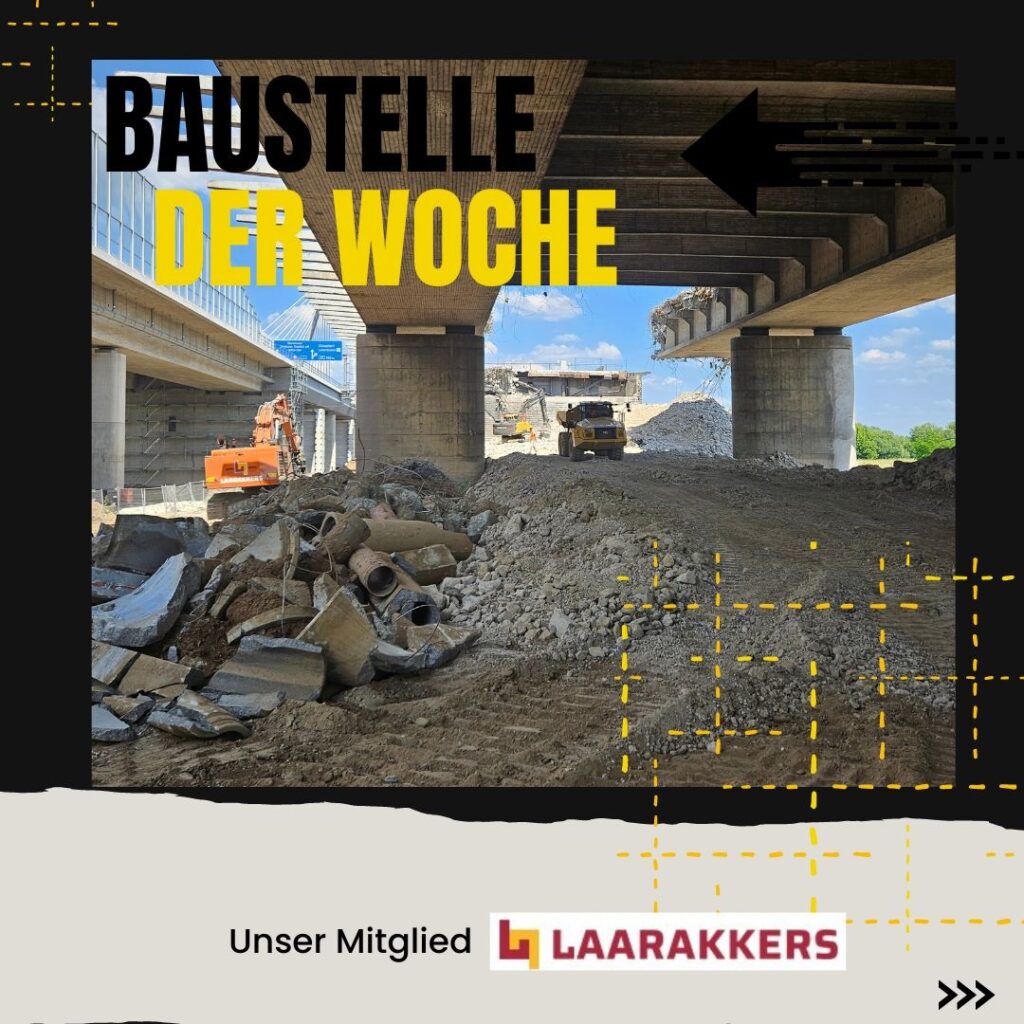
Construction site of the week – Dismantling the Rhine bridge near Leverkusen

Laarakkers has been dismantling the A1 Rhine bridge near Leverkusen since January 2023. The DA member is primarily responsible for dismantling the concrete structures. The highway bridge from 1965, with a total length of 1,061 m and a height of 9.1 m, originally stood on 12 solid supports, which are being dismantled conventionally using excavators and shears.
Dismantling work must be carried out carefully and precisely
In November 2023, the preparatory dismantling work began, in particular the removal of the bridge’s auxiliary foundations, the removal of the sheet piles and the creation of the drop-bed. Demolition could then begin with the large concrete shears. During the work, traffic, which continues to run in parallel, is routed over the newly built bridge. This is why the demolition work must be carried out carefully and precisely.
On average, 12 employees are working on the project and have various machines and equipment in use, such as a Develon DX355CL electric excavator, a CAT 374 HRD, a Hitachi 890-7, a Volvo EC220, a Volvo A30 dumper, a Cat 730 dumper and a Cat 966 wheel loader.
Asbestos found in the cap area of the bridge
Sealing containing asbestos was found in the cap area of the bridge, professionally removed and disposed of. The approximately 18,000m3 of concrete was crushed on site using a Keestrack 13/13 with a screening plant. The granulate will be used as a gravel substitute in the production of new concrete. The dismantling work will continue until March 2025.
The first section of the new A1 Rhine bridge was opened to traffic in February 2024. The second section of the bridge will be built on the site where the old bridge is currently being dismantled. In future, vehicles will be able to cross the new structure in three narrow lanes. For the first time in ten years, heavy goods vehicles will also be allowed to cross the Rhine at this point.
The bridge had been closed to trucks weighing 3.5 tons or more since 2014 – barrier systems were installed two years later to prevent their access. Construction of the new bridge, which will be made up of two parallel sections, began in 2017.
You can find more photos and a video on our Instagram and Facebook channel.




